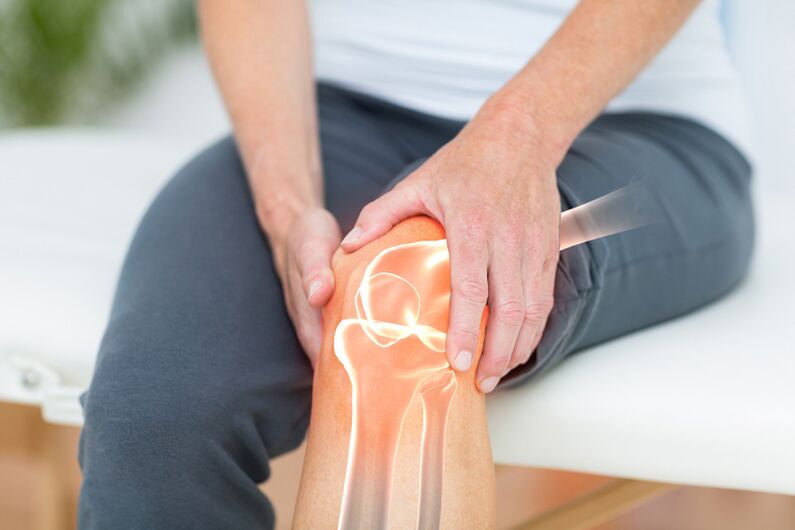
Gonarthrosis, or osteoarthritis of the knee joint, is a very common disease. This diagnosis is made more often in people of older age, but osteoarthritis "starts" much earlier, even at the age of 35-40 years. Gonarthrosis with severe symptoms significantly disrupts the entire way of life, so it is important to consult a doctor at the first manifestations of the knee joints and receive timely treatment.
Causes of osteoarthritis
We can say that osteoarthritis of the knee joint is a disease, on the one hand, due to lifestyle, on the other hand, due to age.
The immediate (internal) causes of osteoarthritis are:
- previous injuries in the joint area (sports, domestic and others),
- inflammatory diseases of the musculoskeletal system (arthritis),
- metabolic diseases (diabetes mellitus),
- common orthopedic defects of the lower extremities, including flat feet and foot valgus, X-shaped deformity of the legs; these defects violate the correct movements of the knee joints, leading to deformation and degeneration of joint tissues.
Factors (external, individual) that cause arthrosis:
- overweight, obesity,
- female,
- was,
- constant heavy loads (standing work, monotonous joint movements with weights during the working day).
Under the influence of external and internal factors, degeneration and aging of the knee joint begins, all its structures are involved in the process: bones, cartilage, synovial membrane, joint capsule, ligaments.
osteoarthritis symptoms
The manifestations of the knee joints are directly related to the stage of arthrosis. The more pathological changes in the joint and adjacent tissues, the more pronounced the symptoms.
- In the early stages, a person may be disturbed by discomfort, mild pain after physical activity, passing on its own.
- As time passes (from 1 year to several years), the pain intensifies, becomes permanent, joint movements are limited, a characteristic "crunch", "creak" appears when moving.
- In the final stage of gonarthrosis, movements are markedly limited, the joint is visually deformed, walking is difficult, and serious complications can develop to complete immobility ("joint mice", joint fusion, etc. ).
Diagnosis of osteoarthritis of the knee joints
Osteoarthritis of the knee joint is detected using available diagnostic methods:
- Knee joint ultrasound allows assessing the condition of the cartilage and bone surface of the joint, involving the soft tissues; it is of particular importance in the early stages of arthrosis, as it helps to identify pathological changes even before the appearance of severe symptoms;
- radiography is also one of the main diagnostic methods, but it is not always available, in addition, it is associated with exposure to radiation of the body;
- to clarify the diagnosis or identify the features of the disease course, MRI, CT, and arthroscopy are also used.
Gonarthrosis treatment
In arthrosis of the knee joint, several exposure methods are used:
- drug therapy, including intra-articular drug administration,
- traction (discharge) therapy
- physiotherapy, classic and innovative methods,
- physiotherapy and massage,
- manual therapy,
- autoplasm therapy (PRP therapy).
The combination of these methods, selected by the doctor, can reduce the symptoms of osteoarthritis, stop the inflammation and degeneration of the joint, maintain its mobility and range of motion.
The early stages of osteoarthritis
In the early stages of the disease, drugs with an analgesic and restorative effect (NSAIDs, chondroprotectors, vitamins), prescribed by a doctor, are used. In addition, a variety of orthopedic devices are used: insoles, insoles, special shoes). Physiotherapy, manual massage, physiotherapy exercises give a good effect.
A noticeable effect of treatment does not occur immediately, but if the doctor's recommendations are followed, the condition improves.
progressive osteoarthritis
More serious measures are needed here, in these cases the doctor may resort to minimally invasive interventions - arthroscopy, introduction of enriched plasma into the joint (PRP therapy).
In severe forms of arthrosis, severe pain, with concomitant synovitis (accumulation of excess intra-articular fluid), corticosteroids are injected into the joint, which leads to rapid pain relief. The method is considered one of the most effective, and if the intervention is carried out correctly, there are no complications (it is rarely possible to increase pain as a reaction to the drug, a negative effect on cartilage, and some others).
Among the surgical methods that preserve the functionality and range of motion of the joint, arthroplasty, arthroscopy and endoprosthesis operations deserve to be highlighted.
Knee osteoarthritis treatment in a professional clinic
In a professional and modern clinic, experienced surgeons and arthrologists carry out consultations. The clinic takes an individual approach to each patient, performs accurate diagnoses using specialized class equipment (ultrasound), selects the optimal combination of treatment methods, taking into account the stage of arthrosis and the main symptoms, and prescribes medication in a timely manner to reduce painful manifestations.
Osteoarthritis of the knee joint is rightly considered an age-related disease, but its development can be prevented or delayed if the state of the joints is assessed in time and therapy is carried out (for preventive or therapeutic purposes).
The professional clinic offers physiotherapy procedures (electrophoresis, darsonval, massage, acupuncture) and minimally invasive interventions (arthroscopy, intra-articular injections) that improve the condition of the joints, courses of supportive medication are prescribed to help consolidate and prolong the effect. of the main therapy, prevent exacerbation.
























